Happy Canada Day! Maxville Memories: the Sprigs o’ Heather Girls Pipe Band in 1963
July 1st is Canada Day, so we look back 57 years to the days when pipe band travel within the massive country was precious and celebrated.
By Iain MacDonald
Pipe bands everywhere are disappointed by the cancellation of Highland games this year, and we’ve all come to appreciate that we can’t take for granted the jet-setting pipe band summer. Some bands have mostly big contests in their sights and travel annually to the World’s in Glasgow, or significant events such as the North American Championships at Maxville, Ontario, or the Mid-West Championships in Chicago. This pattern has become the norm for many bands. They compete in a few local contests and then travel for a big one.
It wasn’t always the case. It was unusual for a pipe band to travel across the continent for a competition until the 1970s. Airfares were expensive, and neither pipe bands nor their members had available resources for that kind of travel. In 1963, the all-female Sprigs o’ Heather Girls Pipe Band from Moose Jaw, Saskatchewan, decided to travel to Maxville, and they repeated the trip in 1965.
Following World War II, many Scots made their way to North America. Post-war Britain was harsh: the economy struggled, the pound was slipping, and jobs just weren’t as available. In all parts of North America, new pipe bands were organized and taught by Scottish immigrants, taking advantage of the large baby-boom generation of children. This trend was the case in Moose Jaw, where the St. Andrews Boys’ Pipe Band was an established force by the 1950s.
There was interest among families for young women to learn also, and in 1956 the Sprigs o’ Heather Girls Pipe Band was formed. The first kilts came from material purchased right in Moose Jaw from the Saskatchewan Woolen Mill. The mill made a bolt of Dress MacDonald tartan for another customer, but it had a flaw and was on sale at a bargain price. Parents made the kilts in Moose Jaw, and over time they raised enough money to purchase complete uniforms.
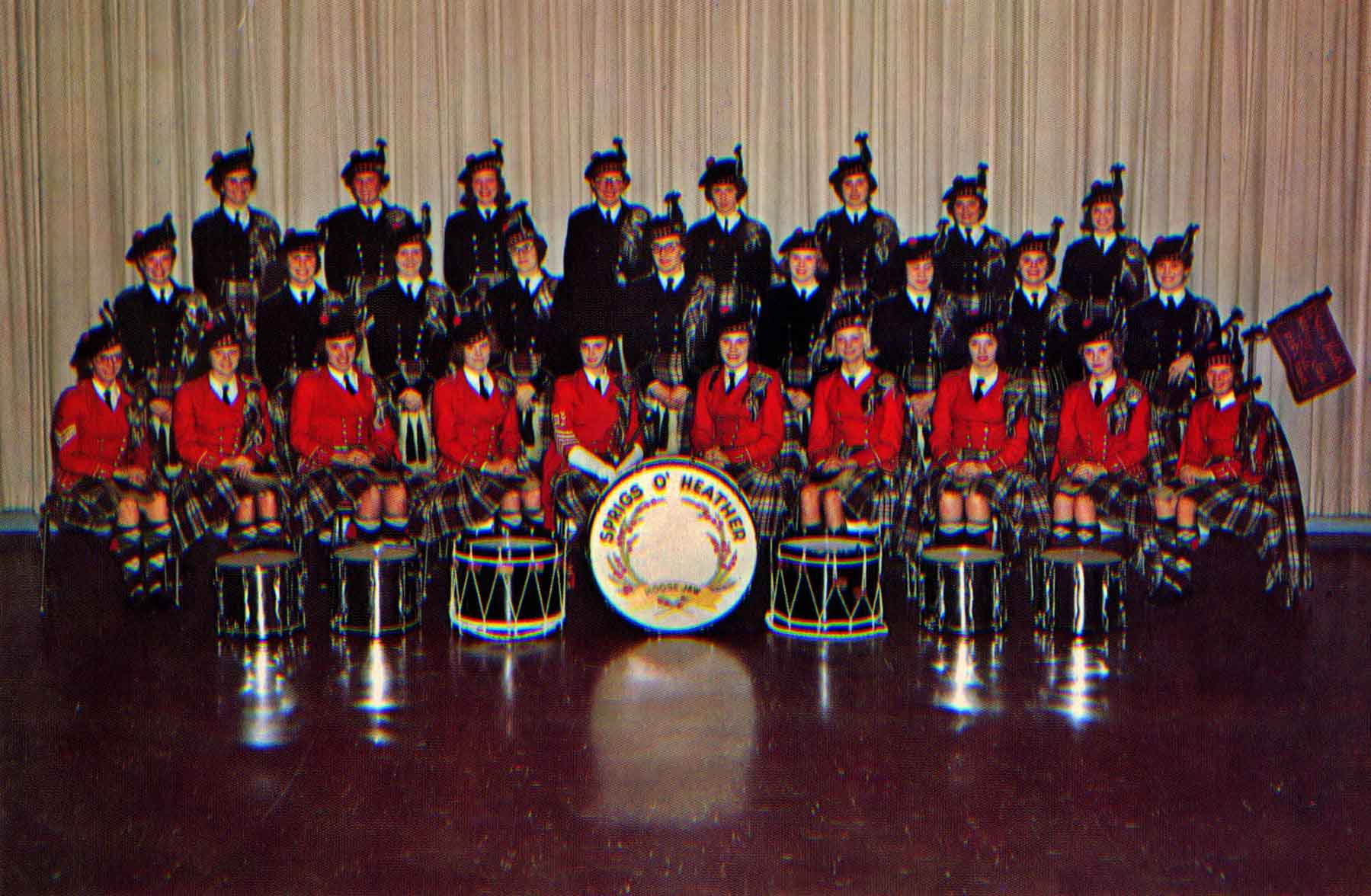
The pipe band was funded by tea and bake sales, rummage sales, and small fees for parades and performances. “The Sprigs” competed at the local Moose Jaw Highland Games and eventually started to compete at events in other prairie cities. By 1961, the band had 26 active band members and another 22 learning on chanters and drum pads. The Sprigs were experienced, fully outfitted, and had success at local competitions. In 1963, the band decided to travel to Ontario to compete in the North American Championships at Maxville, and they started fundraising a year in advance.
One of the Sprigs on that trip was Linda (Beebe) Rossler. “We were told more than a year ahead of time that we were going. We all helped to raise money to go. We sold donuts door to door for many Saturdays. There was a tea at the Elks to raise money. All the girls served at the tea: individual cups of poured tea and plates of home-made baked goods. There was a raffle at the tea for a Sprigs o’ Heather doll that was about two feet high. The trip was fully paid for when we left. We just took spending money.”
The Moose Jaw Times-Herald reported on the upcoming tour, noting that “the $3,500 required for the trip was raised … a donut drive, spring tea and bazaar, business canvas made up the fundraising projects. The band also received a $500 grant from the provincial government.”
Band members recall the long hours of preparation under the direction of brothers Bill and Bob Shepherd, and Band Director Dick Gibson. The Shepherds came to Saskatchewan from Arbroath, Scotland, and were instrumental instructing both Moose Jaw pipe bands of the day. Dick Gibson, also a piper in the Moose Jaw St. Andrews, was the Sprigs’ band director for another 20 years. Drumming instruction came in part from ex-Edinburgh City Police Pipe Band and Powell River Pipe Band great Jimmy Walker, who lived in Saskatoon.
Moose Jaw’s mayor and a group of about 60 well-wishers saw the band off as they boarded the train at the Canadian National Railway (CNR) station in Moose Jaw on July 31. The band consisted of 24 playing members, plus nine instructors and chaperones. The itinerary included the Glengarry Highland Games at Maxville, the Dutton Highland Games, and a concert in Toronto’s High Park. The band would also visit Niagara Falls before returning home.
“The girls were all in one car as I remember. There were seats by day and bunk sleepers by night. It took three days and two nights of travel.” – Linda Rossler
Shortly after boarding in Moose Jaw, the train stopped in Regina, Saskatchewan, where the band presented a short performance at the CNR station, and they also practiced while the train was stopped at Winnipeg.
“We caught the CN train at the station on Stadecona Street,” remembers Linda Rossler. “The girls were all in one car as I remember. There were seats by day and bunk sleepers by night. It took three days and two nights of travel. Once we left Manitoba, all we saw were rocks and trees and water…rocks, and trees and water. We ate in the dining car where there were white linen tablecloths, good silver and good meals. No pipes or drums were played on the train.”
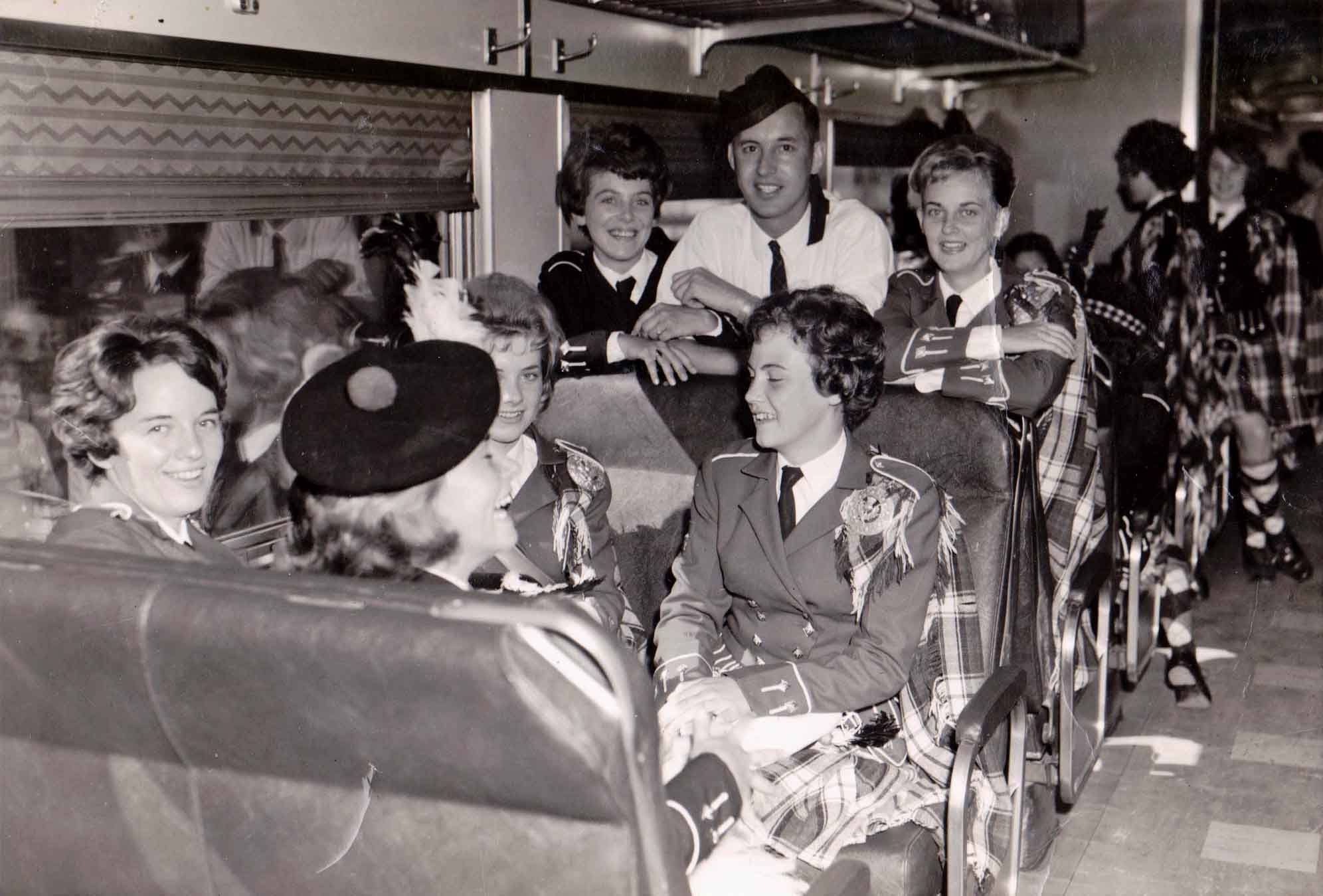
Joyce (Stoppler) Sowiak’s memories of the train aren’t as pleasant. “I remember the train ride well. I was motion sick the whole time. I still get motion sickness. I lived on ginger ale and chips.”
Young people today experience other ways of living through a constant stream of visual media, but that was not the case for a band of teenage girls from Moose Jaw in 1963. For many, it would be their first time travelling any distance from their home, and it was memorable.
“I remember having breakfast at the Royal York Hotel,” says piper Linda Rossler. “They had cantaloupe and ice cream, strawberries and cream on the breakfast menu. I thought you only had those for dessert. I had strawberries and cream. I think we stayed at the hotel but can’t say definitively. We had lunch that day with the Mayor of Toronto in a park. I think it was in High Park.”
More than 5,000 people attended the concert in High Park to witness “the colourful display of Scottish music and marching put on by the girls.”
According to the report in the Times-Herald, more than 5,000 people attended the concert in High Park to witness “the colourful display of Scottish music and marching put on by the girls.”
Moving on to Maxville, the band was billeted in local homes, two girls to a home. Memories of that experience were that the people were lovely, but it could be uncomfortable to stay with strangers. There was a lot of organizational trust in this plan, which was not unusual for the times.
The band changed focus and prepared for competitions. Rossler recalls, “Dick Gibson, Sheila Scott, and Donna Rainey tuned the drones for us at every event. Bob or Bill Shepherd also tuned if they were there. Bob may have been in Maxville, but I don’t think Bill was. Bob and Bill were our pipes instructors. We took good care of our pipes. The silver was always polished. We used glycerine to moisten the leather bags of the pipes, maybe twice a year. Our drummers took lessons from a world-class drummer from Saskatoon. I think his name was Jimmy Walker.”
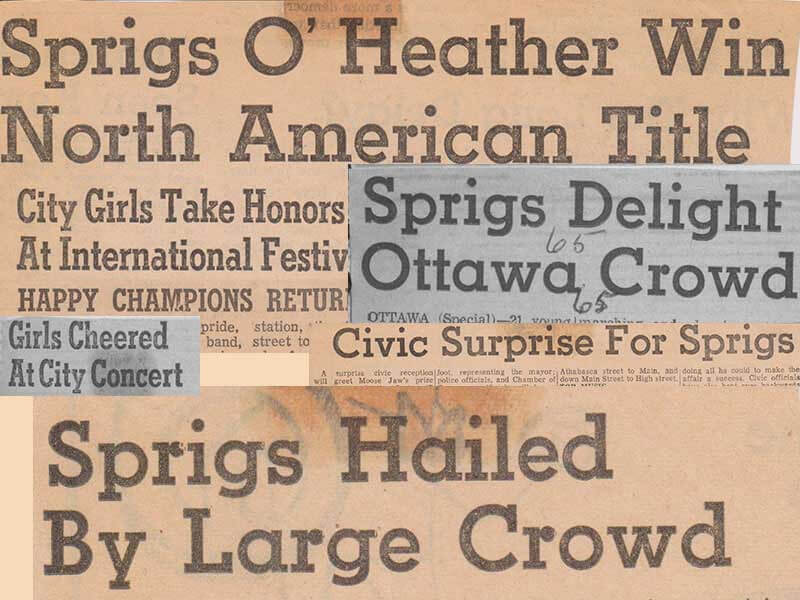
The Sprigs competed in the Maxville Fairground in front of a full grandstand. The band played a march, strathspey and reel selection, and also performed a fancy drill. Rossler remembers how she felt about it. “I don’t remember the tunes anymore. We took the North American Championship!”
Drummer Joyce Sowiak has similar memories. “There were many competitions, and I think we did pretty well. We were very excited when we won. The thing I remember most was the last day, all the competitions were done. There were pipe bands from everywhere it seemed. It was getting dark, and we all played en masse. It gave me chills then and still does.”
Coming from a piping environment in which there might be four or five pipe bands at a Highland games, it was a thrill to experience the 22 pipe bands that were at Maxville. According to the Times-Herald, the band won “The North American Girls’ Pipe Band Championship,” and members had also done well in the solo events. The newspaper reported that the band’s publicity director in Moose Jaw received a telegram from the band members after the event. “We’re all very well and happy!” the telegram said.
One of the players on the trip was Saskatoon piper Donna Fraser, who was not a regular member of the band. This may have been the start of a western tradition of players jumping on for the Maxville trip! Donna was the daughter of well-known Saskatoon piper Hugh Fraser, pipe-major of the Saskatoon Light Infantry and later the North Saskatchewan Regiment. She ended up winning her solo class at Maxville and remembers playing an R.G. Hardie pipe chanter.
The day after Maxville, the band travelled to Dutton, where they competed again and won third prize in the slow march event and sixth prize in the regular contest. They were the only all-female band of the 11 competing at the games.
After Dutton, the band travelled by train to Niagara Falls, where they toured the falls and performed at the “International Y’s Men’s Conference,” which had representation from 47 countries.
Joyce Sowiak remembered Niagara Falls. “We sang a lot on the bus, and we weren’t bad. All quiet, dusky, and our songs. Could have heard a pin drop. Under the falls the next day was something else. Most of us, before joining the band, had never been anywhere.”
The band executive coordinated with the local MLA and the mayor’s office to provide a civic reception for the Sprigs, including a surprise welcome off the train.
After Niagara Falls, it was time for the train home. “We were so happy to see the prairies on the way home,” remembers Linda Rossler. “We just took coming home in stride. It was good to be home.”
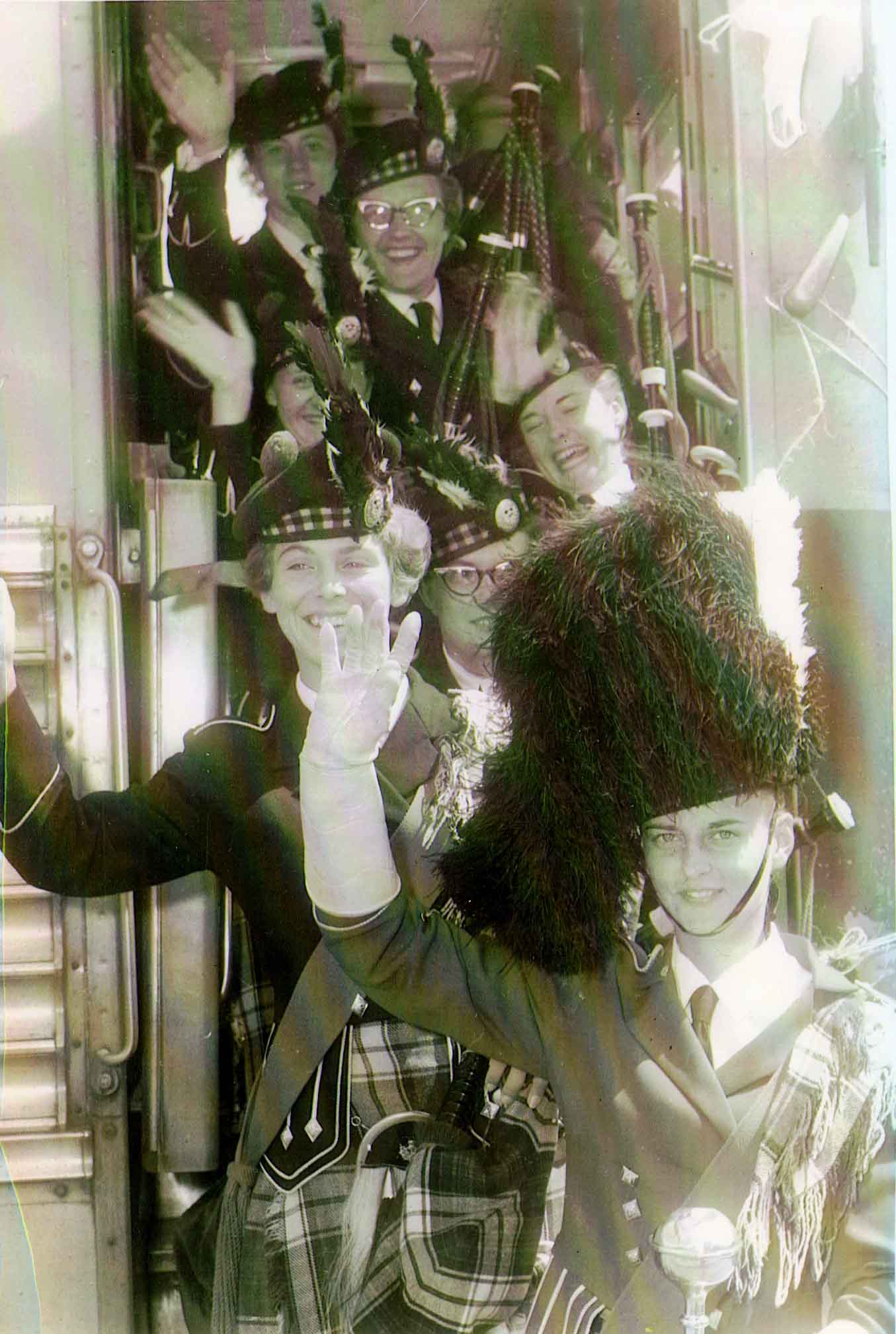
While the band travelled back across Canada on the train, significant preparations were underway in Moose Jaw for a welcome. The paper published a couple of articles about the win at Maxville and encouraged people to come out to celebrate the band’s return. The band executive coordinated with the local MLA and the mayor’s office to provide a civic reception for the Sprigs, including a surprise welcome off the train. The Springs were in full uniform, and they were played off the train by the St. Andrew’s Boys Pipe Band. Civic officials were there to greet them, and the band rode in open convertibles to St. Andrew’s Church, a few blocks away. There, they formed a celebratory parade and performed on Main Street to a large crowd of enthusiastic local people. The city-sponsored a luncheon for the band members, instructors and chaperones at the Harwood Hotel.
Linda Rossler recalled the warmth of the reception, but also remembers not being entirely thrilled by the parade. But the band members became local celebrities for a short while.
“I remember wearing my band sweater to Central High School in September, my grade 10 year. One of the teacher’s comments, ‘Oh yeah, you guys won that competition down East this summer.'”
Now more than 50 years on, that first trip still stands out as a formative experience for Rossler. “It was a wonderful experience … one you never forget. We learned ‘team.’ We looked out for each other. We never embarrassed our families. We held each other in high regard. We made friendships that have lasted a lifetime. We made Moose Jaw proud, but we stayed humble. We learned you may come from Saskatchewan, but you can stand tall wherever you go.”
Joyce Sowiak remembers being happy to get home to her family and her boyfriend. “Exciting! We were stars, ha, ha! It made lasting, lifetime friendships, crazy, fun proud memories and put the travel bug into many of us. We were a close-knit group.”
The band returned to Maxville in 1965, and this time the itinerary included a trip to Ottawa. The Sprigs performed Thursday and Friday in Ottawa, and they missed no opportunity to put on a show. As described in the Moose Jaw paper, “The visit to Ottawa was a smash hit from the time the girls stepped off the train in uniform, snapped to attention marching order and piped their way into the station concourse to the surprise enjoyment of hundreds. They were greeted at the depot by J. Ernest Pascoe, Member of Parliament for Moose Jaw-Lake Centre.”
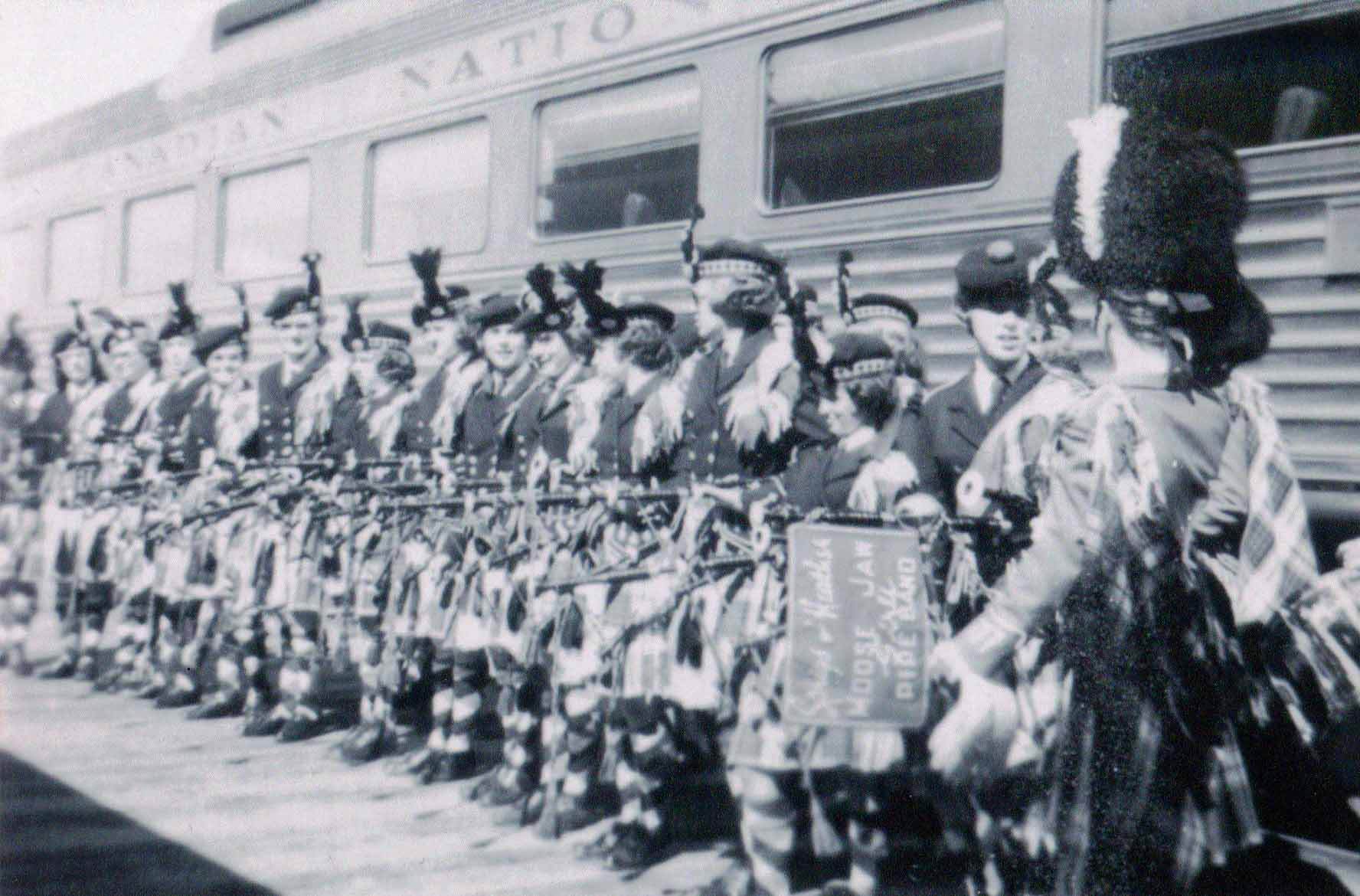
The Sprigs also visited one of Saskatchewan’s best-known politicians, former Prime-Minister John Diefenbaker. Diefenbaker was Leader of the Opposition when the band visited in 1965. Jacqueline (Cameron) Holmberg was pretty young on that trip, but her visit to Parliament Hill made an impression on her young mind.
“I was only 12-years-old, but I was thrilled when we were given the opportunity to visit the Parliament buildings and were allowed to go into John Diefenbaker’s office and have a picture taken. I was right behind him. He was very personable, very friendly to all of us.”
In what has become a pre-Maxville tradition, the Sprigs that year performed an evening concert on the lawn of the Supreme Court building, sponsored by the Sons of Scotland. The Times-Herald reported the story. “The Moose Jaw girls marched their way down the crowded Mall, with motorcycle police escort. After the concert they marched back down the Mall, followed by a large crowd that insisted on ‘The Road to the Isles’ as a final number. This was played in front of the Post Office, just at the entrance to Confederation Square.” The Sprigs also performed the Friday tattoo at Maxville in 1965, demonstrating their prowess at fancy drill routines.
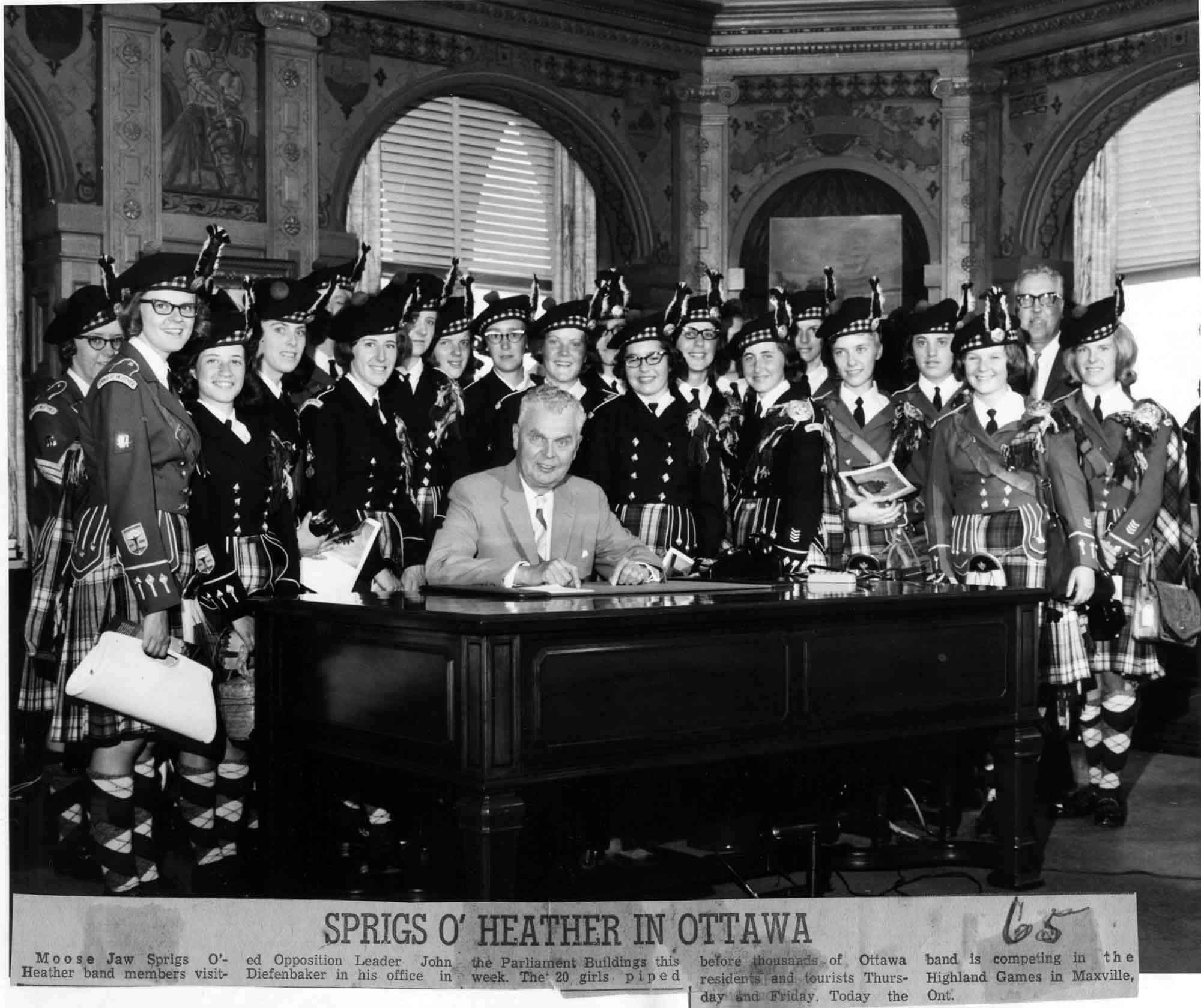
Many members of the Sprigs did not continue their piping and drumming after they left the band. There were few or no options for young women to continue playing at the time, and most left it behind. A number of the women in the band ended up having children and grandchildren who played in bands, and a number of those are still active in the community.
The Sprigs o’ Heather might have started a regional trend for pipe bands travelling east to attend big contests. Winnipeg’s Centennial Pipe Band went east later in the 1960s, playing in the top grade at several events, and by 1969, the Moose Jaw St. Andrew’s Boys Pipe Band would follow. In the 1980s, Saskatchewan’s Victoria Park Pipe Band made Maxville trips to compete in Grade 1, and since 1996 the City of Regina Pipe Band has been a regular competitor at Maxville.
This year, we’ll all have to look back at past trips to remember the music, the stories and the satisfaction of taking off those brogues after a long day at Maxville.
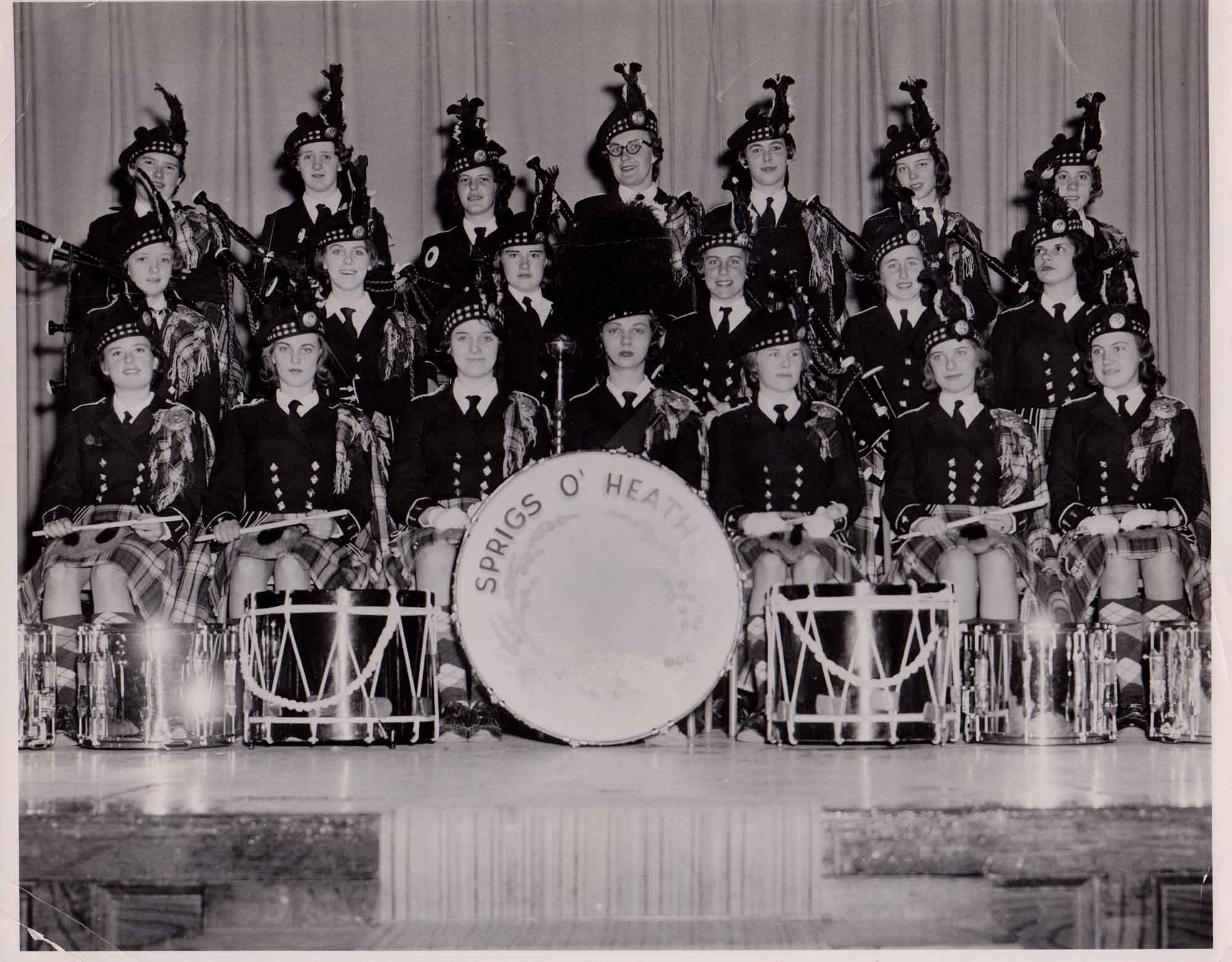
Many thanks to the following 1960s Sprigs o’ Heather for their assistance: Jacqueline (Cameron) Holmberg, Joyce Sowiak, Linda (Beebe) Rossler, Donna Rainer, and Marilyn (Usher) Sullivan, with help from 1980s Sprig alumnus Michelle (Carline) Gallagher.
Band members on the trip were: Elaine Bastedo, Barbara Heilman, Sharon Allcock, Nory Shepherd, Marilyn Usher, Elaine Fowlie, Linda Hudson, Lynne Fryklund, Jackie Stewart, Donna Fraser, Beryl Elliott, Linda Beebe, Joyce Stoppler, Donna Read, Susan King, Barbara Koshnysh, Jerry Fisher, Irene Scott, Sheila Scott, Sandra Meikle, Donna Rainey, Sherry Ross and Faye Elliott.
Newspaper clippings and photos from the members’ collections. The Moose Jaw Times-Herald ceased publication in 2017 after 128 years in business.
Iain MacDonald is a frequent contributor to pipes|drums. The long-time pipe-major of the Grade 2 City of Regina, he has been a member of Grade 1 Simon Fraser University and Babcock-Renfrew under Pipe-Major Iain McLeod in the 1980s and was a pupil of the great Donald MacLeod for many years. He lives in Regina, Saskatchewan.

NO COMMENTS YET